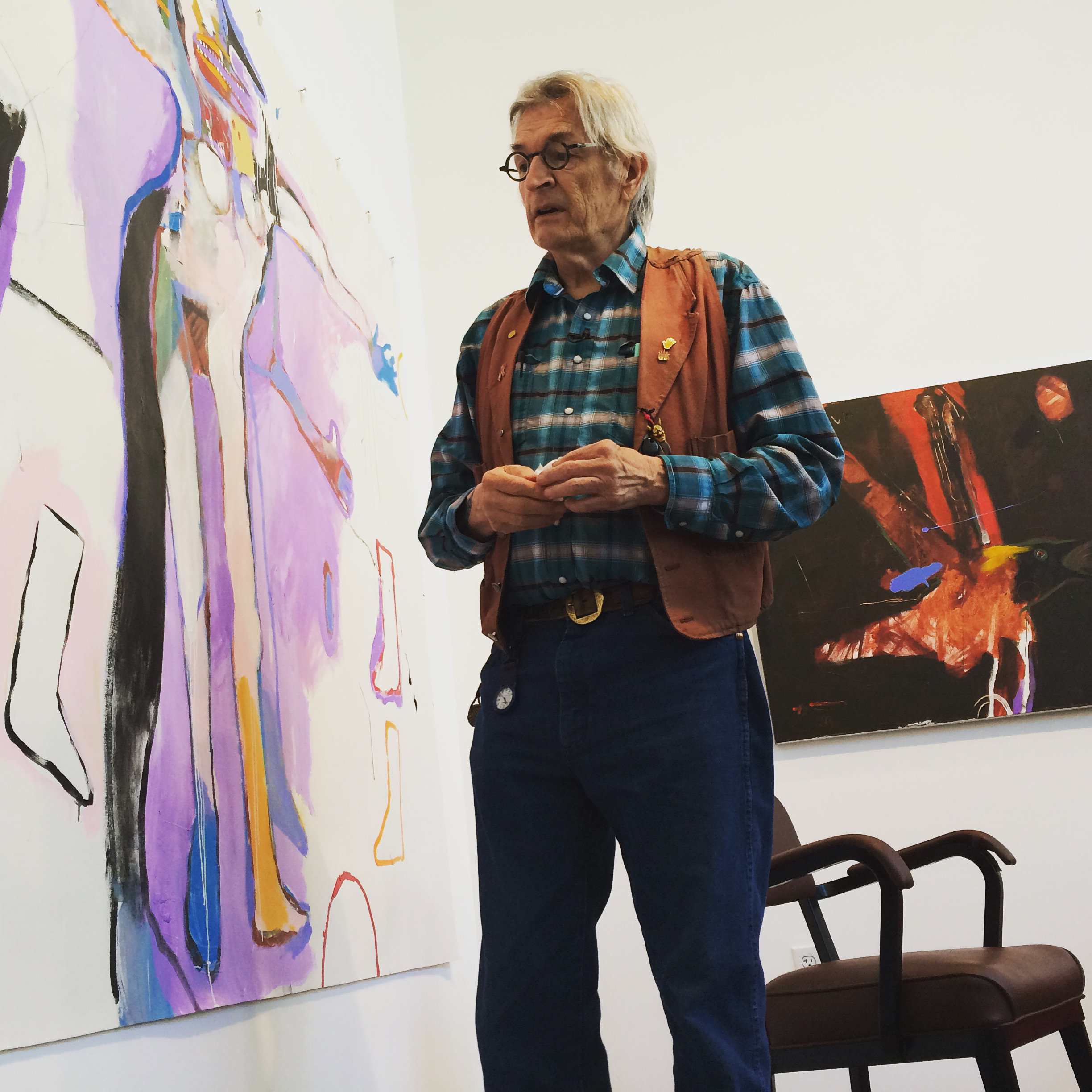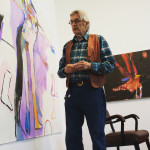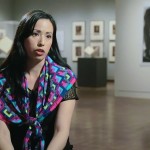by Haylee Kushi (Staff Writer)
On Wednesday September 7, Katherine McCleary ’18 (Apsáalooke/Chippewa-Cree) and Yale American Decorative Arts Ph. D. candidate Sequoia Miller facilitated a conversation about the late Native artist Rick Bartow and this summer’s Native American Arts internship based at the Yale University Art Gallery (YUAG).
Rick Bartow was a contemporary Native American artist from the Mad River Band of Wiyot Indians, a tribe indigenous to Northern California. Bartow was heavily involved with the Siletz tribe while growing up near Newport, Oregon, and created art with themes spanning across various indigenous communities.
While Bartow sculpted, painted, and etched, his great love was drawing. According to Miller, Bartow drew in graphite early in his artistic career but used bright, colorful pastels following his adaptation of influences from modernist Marc Chagall. Māori artist John Bevan Ford also had an influence on Bartow’s work. Bartow imitated Ford’s strategy of depicting Native peoples’ close relationships with animals by painting figures with a combination of human and animal features.
“I’m taken by the myth of Sisyphus as I am by Coyote,” recited Miller in a telling passage from Bartow’s book Things You Know but Cannot Explain. “I didn’t have to use some pseudo-knowledge of shamanism or ceremonial rites culled from some anthropology book. Contemporary art allowed me to vent something to my native interest in an articulate and valid manner.”
The three Bartow pieces displayed currently at the YUAG – “Bound Salmon Man,” “Winter Brother,” and “Coyote” – are three of a collection of five works that the art gallery put up this summer. Bartow’s drawings are the only contemporary works by a Native American artist in the YUAG, and they are a temporary installment.
Speaking on behalf of herself and Leah Shrestinian, this summer’s other Native American Arts intern, McCleary recommended that the YUAG collaborate more with local Native communities in their exhibitions, and curate more contemporary Native art. McCleary emphasized the importance of contemporary Native art as opposed to historical pieces both to combat the historicization of Native peoples, and because contemporary Native art tends to be less tribally specific, and thus more accessible to a wider Native audience. Bartow, who draws influences from various Native cultures and communities – Mad River Band of Wiyot Indians, Siletz, and Māori – in his work, created art that is relatable for various Native people.
“The most Native art [at Yale] is not in the Peabody or in the YUAG, but at the Yale Native American Cultural Center,” said McCleary. “Visiting as a first-year I thought this was pretty cool, but after working for the YUAG I wondered why contemporary Native art isn’t displayed in the actual gallery.”
As a part of the Native American Arts internship, McCleary and Shrestinian visited other museums to better research how museums can collaborate with local Native communities and represent Native art and people in vibrant and accurate ways. Displaying work by Bartow, who was committed to combatting the stereotype that Natives exist only in the past, represents a first step. In an interview, Shrestinian said that the Gallery Plus program, which partners with groups at Yale, would be “a perfect opportunity [for the YUAG] to improve its relationship to Native art by collaborating with the NACC, before even acquiring more Native art.”
Attendees of the talk continued this conversation in the following discussion: why doesn’t the university consider the artistic production of Native people worthy of the same space as white artistic production?
Members of the Yale Native community as well as curators from both the Peabody Museum and the Art Gallery attended the talk and participated in the conversation. The attendees were particularly interested in “next steps,” and concern about repairing Native people’s relationship to and representation in both the Yale Peabody and Yale University Art Gallery dominated the conversation.



